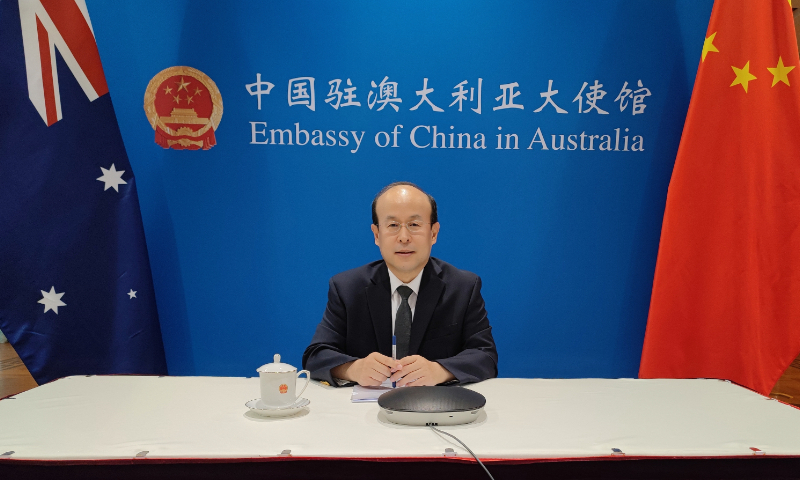China, Australia share same goal of emission reduction, have broad prospects for cooperation: Chinese ambassador

Xiao Qian, China's ambassador to Australia, delivers a speech at the Australia-China Low Carbon and Innovation Cooperation Forum on December 5, 2022. Photo: Courtesy of the China Chamber of International Commerce
China and Australia share the same goal of reducing carbon dioxide emissions and the development of a low carbon economy, and the two nations have broad prospects for cooperation, Chinese Ambassador to Australia Xiao Qian said on Monday.
To commemorate the 50th anniversary of the establishment of diplomatic relations between China and Australia, the Australia China Business Council (ACBC) and the China Chamber of International Commerce (CCOIC) jointly held a business forum on Monday with a theme of low carbon and innovation cooperation, aiming to promote bilateral cooperation.
The two countries are highly complementary and enjoy broad prospects for cooperation in the development of a low carbon economy, Xiao said at the forum.
Over the past decade, China has been among the countries with the fastest energy intensity reduction in the world, and has overfulfilled the 2020 target of cutting carbon emission intensity by 45 percent. As a result, a total of 5.8 billion tons less carbon dioxide is emitted, according to Xiao.
Australia has also planned to slash carbon emissions by 43 percent by 2030 and to net zero by 2050.
The two countries could enhance cooperation in such areas as green technology, green equipment, green services and green infrastructure, Xiao noted.
Australia's Ambassador to China Graham Fletcher said that the two countries have good prospects for cooperation on renewable energy sources. Low carbon has become an innovative frontier for cooperation between Australian and Chinese businesses, he said.
Business representatives from both countries also attended the forum, calling for more cooperation in low carbon development.
China and Australia have a sound industrial cooperation mechanism, Tian Yongzhong, vice general manager of Aluminum Corporation of China (Chinalco), said at the forum.
Australia is rich in nonferrous metals such as aluminum and copper and has a complete industrial chain. And the scale of China's nonferrous metals industry ranks first in the world, with aluminum oxide and electrolytic aluminum accounting for more than 50 percent of the world's total. Heading in the same direction of emission reduction, bilateral cooperation is a win-win trend of the era, Tian said.
China has been Australia's largest trading partner for 13 consecutive years. The trade volume has surged from less than $100 million in 1972 to over $207 billion in 2021, accounting for 34.2 percent of Australia's total foreign trade in 2021, according to Xinhua News Agency.
Cooperation between China and Australia is mutually beneficial in nature and delivers tangible benefits to the two countries and the peoples, though bilateral relations had previously faced hard times, Xiao said, adding that the two nations need to promote practical cooperation, and positive relations could enable the two countries to work together to address global challenges.
Global Times

